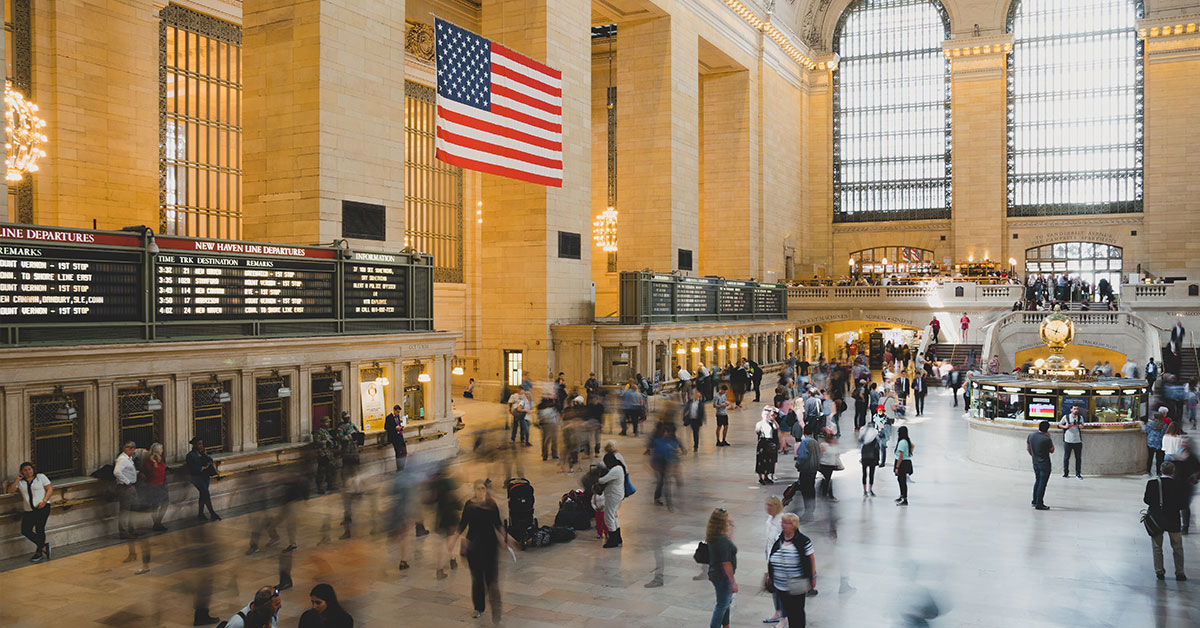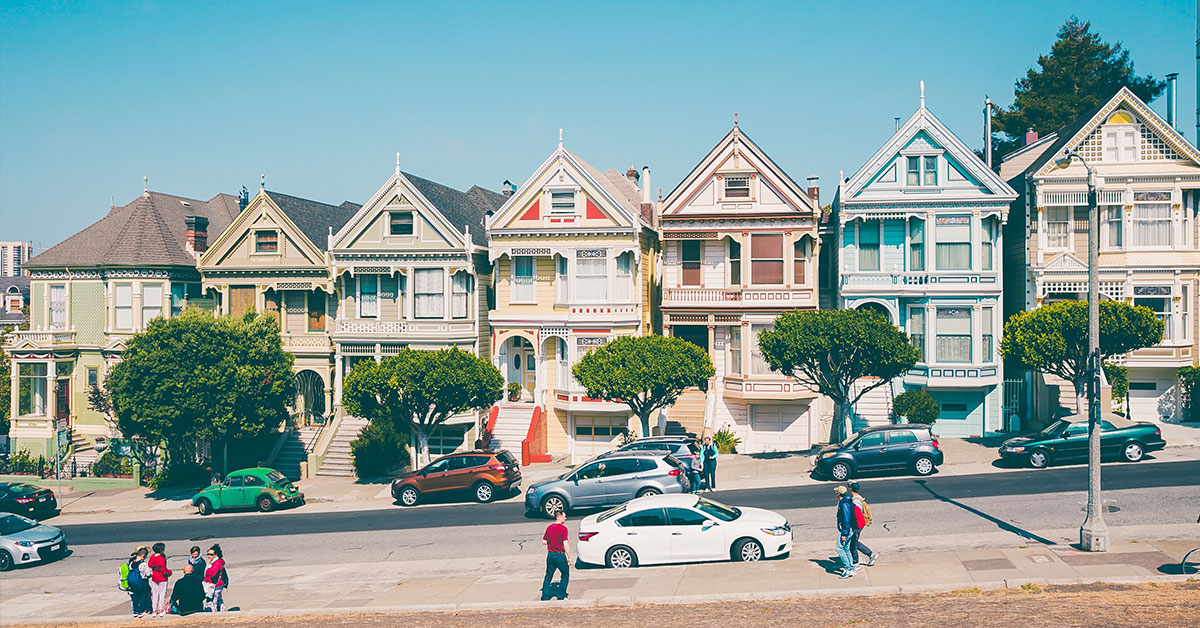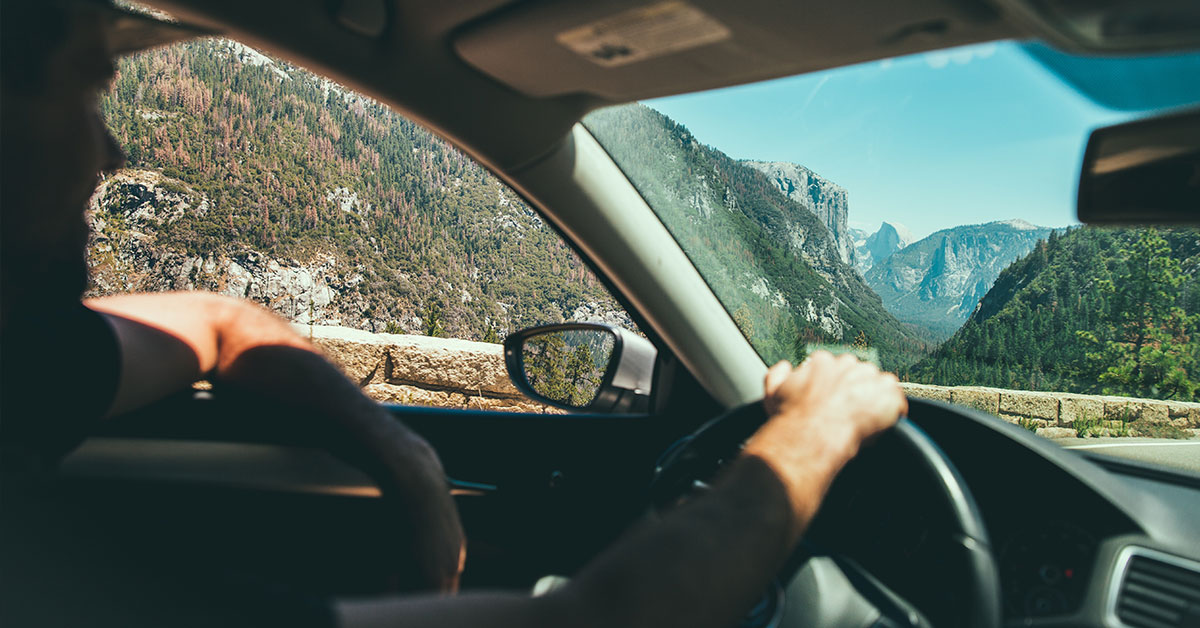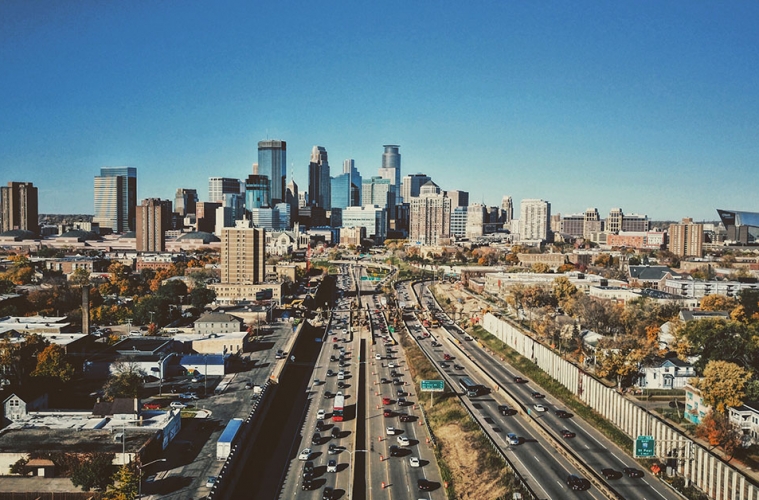‘Free to be anything you choose / Free to wipe tables and shine shoes’. That’s America, according to the sardonic wit of lyricist Stephen Sondheim in the musical West Side Story. And although it still says ‘Give me your tired, your poor, your huddled masses yearning to breathe free’ on the Statue of Liberty, getting the opportunity to make a new life there is harder than it’s ever been for most people. Still, where there’s a will, there’s a way…
| Make international payments faster and cheaper with WorldFirst. | |
|---|---|
| Sign up today – and start saving! |
Our top five reasons to move to the USA
- A world on your doorstep. Ok, it’s a pretty big doorstep but once you’re in the US you can take your pick of landscapes, climates and cultures. If you’re determined enough, it’s even possible to do the ‘California double’ – surf in the morning and ski in the afternoon.
- Living space. Unless you’re in the heart of a big city such as New York, you’ll find that when it comes to property you’ll get more square feet for your money than you’re used to in the UK.
- Land of opportunity. We now know that literally anyone can become the President of the United States of America. More seriously, it’s still true that hard work and a sharp mind can not only earn you success here, but admirers too.
- The people. Of course, there are all sorts of people in the USA, but you’ll be surprised just how many friendly, open, helpful ones you come across over the course of your day (just not in Manhattan).
- You never really get over the excitement of living among buildings and landscapes you’ve known your whole life through movies and TV.
Five places to consider in the USA
- New York, New York. The iconic skyline of Manhattan is just one of a thousand reasons to live in the city that never sleeps.
- San Francisco, California. The beating liberal heart of the USA is also the gateway to Silicon Valley. Familiar from countless movies, it’s possible you too will leave your heart there.
- Denver, A thriving business metropolis that consistently features high up on every ‘quality of life’ list. Plus, drive for an hour and you’re in the Rockies.
- Minneapolis St. Paul, Minnesota. If you don’t mind a real winter (−9.1 °C), the twin cities boast big city amenities, 13 lakes and a real mid-western feel.
- Fayetteville, You’re excused for never having heard of it but Fayetteville has made the top five of the ’25 Best Places to Live in the US’ for three years in a row thanks partly to its low cost of living compared with average income.
Of course, compiling a list if 5 is mug’s game and means we miss out such perennial hot-list favourites as: Austin, Portland, Chicago, Seattle, Boston, Columbia, Washington DC and Arlington to name a few others.
The moving to the USA checklist
How to work in the US
Getting the necessary paperwork has long been notoriously difficult and only gets more so.
- If you want to work temporarily in the USA, you’ll need a nonimmigrant work visa. Unlike many countries, the USA doesn’t issue work visas for casual employment so you will need to have a specific offer of employment. Usually, this will involve your prospective employer filing an employment-based petition on your behalf with the United States Citizenship and Immigration Services (USCIS) before you can apply. You’re going to have to be in a ‘speciality occupation’ though, and have a relevant BA or equivalent. Even for seasonal work, the immigration service will need to be satisfied that there aren’t any Americans available to do the job.
- For a more permanent arrangement, you would need an immigrant visa but generally you would need to be considered ‘an alien with extraordinary ability’, someone who has risen to the top of your field of endeavour with ‘national or international acclaim in the field of science, art, education, business or athletics’. Melania Trump got in on one.
- The Diversity Immigrant Visa Program is effectively a lottery open to people from countries with historically low rates of immigration to the United States. 50,000 Diversity Visas (DVs) are typically available every year. UK citizens are excluded unless you’re from Northern Ireland. If your spouse was born in a country which is eligible, you can claim your spouse’s country of birth provided you’re both named on the entry.
How to manage your money in the US
There are quite a few hurdles to opening a bank account in the US, not least because of the anti-money laundering laws.
If you’re already in the US, you’ll need a load of documentation (passport, proof of address, secondary ID, immigration documents, UK bank statements, credit history report, and certification of employment could all be required), a deposit, and a Social Security Number (here’s how to apply for a Social Security Number as a non US citizen). You’re more likely to be successful if you apply at a branch than online.
Setting up a US bank account before you get there is going to be almost impossible. If you already have a UK account with a bank that has a presence in the US (such as Barclays or HSBC) they may be able to help you. Or you could try a US bank that’s present in the UK such as Citibank or Bank of America.
One thing you’ll need to get used to watching out for is ATM fees. The average fee for making a cash withdrawal at an ATM that’s not part of your own bank’s network is now almost $5 thanks to the fees charged not only by the ATM owner, but by your own bank too.
Don’t forget, if you need to transfer money from the US to America or vice versa, WorldFirst offers the easier, cheaper, and faster way to safely get your money where you need it.
How to make friends in the US
While most Americans are only too happy to strike up a conversation with a stranger and seem to have few filters, some Brits find making friends in the US surprisingly hard. There doesn’t seem to be any consensus on why this should be and, in any case, the process of finding like-minded people in a big city will be different from small town, suburban or rural living. All that can really be said with certainty is that the standard rules apply– look out for people with similar interests, outlooks and experiences. Seek out social events around the things that interest you. Use meetup. If you’re into sports, you’ve probably got a lot of work to do to get up to speed before you can join in even a basic conversation about American football, baseball or basketball.
How to find a place to live in the US
The process of renting an apartment in the US is similar to the UK. One of the main differences is that the landlord or leasing agent will almost want to check your credit history to satisfy themselves that you’re someone who pays their bills. As a newcomer to the US you’re not going to have a credit history there. To avoid wasting your own time, it’s probably a good idea to be up-front about this when enquiring. Another way round the problem is to find a relative or friend in the US who will co-sign your lease or act as a guarantor. Alternatively, offer to pay a larger-than-normal security deposit.
Renting a room will be cheaper and easier in the short term. Try sites like SpareRoom and Roomgo.
Eating in the US
- Everything you heard about portion size is true so your stock answer to, “Do you want X with that?” should be, “No”. According to the OECD, an astonishing 38% of Americans are obese. Try not to join them.
- Cuisine-wise, America is still very much a melting pot of cultures. Depending on where you are in the US, you’ll find cuisines influenced by the people who have settled there – sometimes all of them as with Louisiana Creole which blends French, Spanish, West African, Amerindian, Haitian, German, Italian, British and Irish influences.
- Almost every city and state in the US will have its ‘thing’; brisket in Texas, shrimp and grits in South Carolina, frozen custard in Wisconsin and tuna mignon in Oregon. Get out there and have fun exploring the menus of the US.
- One last thing; cheese in a spray can is a thing.
Party like it’s 1999 in US
This is a big country with no shortage of things to entertain you. Whatever your taste in music, there’s a festival celebrating it, although you may have to travel thousands of miles to take in the best ones. And people do. In March, there’s SXSW in Austin Texas (which is now three festivals: SXSW Music SXSW Film and SXSW Interactive) and the genre-busting Big Ears festival in Knoxville, Tennessee. Then there’s Coachella in April, or head on down to the New Orleans Jazz & Heritage Festival in April, the Newport Folk Festival on Rhode Island in June, Lollapalooza in August… And so it goes on throughout the year.
How to live like a local in US
- Drive everywhere. It may have some of the most amazing railway journeys in the world, but most locals view public transport as something for others. Outside the very biggest cities, Americans think nothing of driving all day to get to where they’re going.
- Learn to share. We’re not talking food, we’re talking lives. Sometimes it seems that nothing is so personal that you can’t share it with a stranger in a bar.
- Learn to take bureaucracy in your stride. Don’t forget that you’ve got federal, state and city regulations to comply with so there’s a whole lot of form-filling to be done before you stand in a line for someone to stamp them.
- Get used to tipping. Everyone expects it. It’s effectively mandatory. It’s on the bill. The ‘standard’ tip seems to creep up ever upwards – 25% is not uncommon these days.
- Sort out some health insurance. Please.


